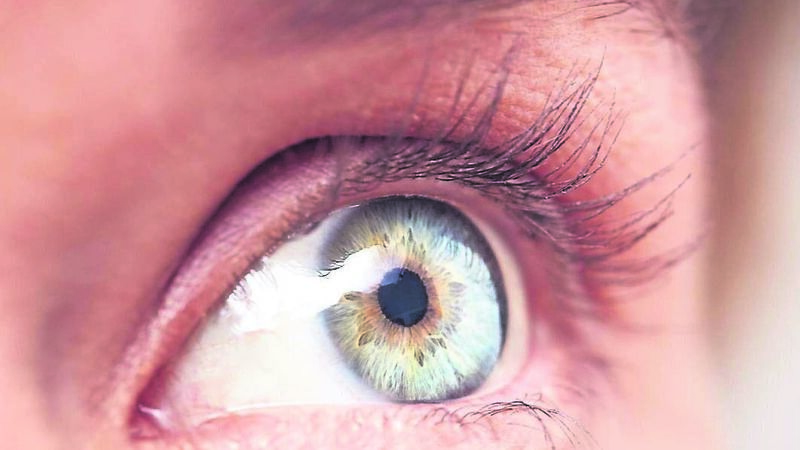Explainer: How vision problems can be made better with surgery

Some eye problems can be corrected with laser surgery, but other issues require different approach
The most common vision problems are refractive errors – where the shape of your eye prevents light from focusing correctly on your retina causing blurry vision. This can mean myopia (short-sightedness), hyperopia (long-sightedness), or astigmatism (where the lens is a rugby ball shape).
In the past, these refractive errors could only be corrected with glasses. While glasses are still a quick and inexpensive option, many people would like a more permanent solution to their blurry vision.
Laser Eye Surgery
For many with refractive errors, laser eye surgery offers a permanent solution. The most common type, LASIK (Laser-Assisted In Situ Keratomileusis), involves creating a small flap in your cornea, reshaping the tissue underneath with a laser, then replacing the flap. It’s remarkably quick (usually taking 15-30 minutes for both eyes) and most people can return to work within a couple of days.
Implantable Collamer Lenses (ICL)
For those with very high prescriptions or thin corneas that make laser surgery unsuitable, ICLs offer an excellent alternative. These special lenses are implanted inside the eye, working alongside your natural lens to correct your vision.
ICLs are typically recommended for younger patients with stable but high prescriptions who aren’t yet candidates for lens replacement surgery.
Lens Replacement Surgery
Also known as Refractive Lens Exchange (RLE), this procedure is essentially the same as cataract surgery but performed before any cataracts develop, purely to correct vision. During surgery, your eye’s natural lens is removed and replaced with an artificial one.
Cataracts: Clearing Cloudy Vision
Cataracts occur when the lens in your eye becomes cloudy, making everything look misty or blurred – rather like looking through a frosted window. They’re incredibly common as we age, affecting many people over 65.
During cataract surgery, the cloudy lens is removed and replaced with a clear artificial one, helping restore your vision to its former clarity. The procedure is usually performed under local anaesthetic and takes just minutes per eye.
Some eye conditions can’t be fully corrected with surgery, but their progression can be slowed or managed to preserve vision.
Macular Degeneration
Age-related macular degeneration (AMD) affects the macula, the central part of the retina responsible for detailed central vision. There are two forms:
Wet AMD
For wet AMD, regular anti-VEGF injections can slow the progression significantly. These work by blocking a protein called vascular endothelial growth factor (VEGF), which stimulates the growth of harmful abnormal blood vessels in the eyes.
In around 10% of cases, vision actually improves with these injections. For about 80% of patients, the injections merely slow the degeneration, which is why catching it early is crucial.
Dry AMD
Currently, there’s no approved treatment to reverse dry AMD, however, research is ongoing.
Glaucoma
Glaucoma is typically characterised by increased pressure within the eye, which can damage the optic nerve and lead to vision loss if left untreated. While glaucoma-related vision loss can’t be reversed, further damage can be prevented. Eye drops are usually the first line of treatment, helping to reduce pressure within the eye and prevent further damage to the optic nerve. For cases where drops aren’t sufficient, various surgical procedures can help reduce eye pressure.
Diabetic Eye Disease
Diabetes can affect your eyes in several ways, most commonly through diabetic retinopathy and diabetic macular oedema.
Diabetic Macular Oedema
When fluid builds up in the macula due to leaking blood vessels, it causes swelling and blurred vision. Treatment options include steroid injections and laser treatment; these treatments can significantly improve vision by reducing swelling, though regular monitoring is essential.
Proliferative Diabetic Retinopathy
In advanced cases, abnormal blood vessels grow on the retina’s surface. These can bleed or cause scar tissue, potentially leading to retinal detachment and severe vision loss. Laser photocoagulation can seal off these abnormal vessels and prevent further growth. While this helps preserve remaining vision, it can’t restore vision already lost and may affect peripheral or night vision in treated areas.
Genetic Conditions Beyond Current Treatment
Some eye conditions, particularly genetic ones affecting the retina, currently have no effective treatments. Regular eye examinations are crucial for early detection of these conditions, even though treatment options are limited.
Retinitis Pigmentosa
This inherited condition causes the gradual degeneration of the retina’s light-sensitive cells. It typically begins with night blindness, followed by a progressive loss of peripheral vision, eventually resulting in tunnel vision. Research into gene therapy and retinal implants shows promise, but effective treatments remain in the experimental stages.
Stargardt Disease
This juvenile form of macular degeneration affects the central vision, usually beginning in childhood or adolescence. While research is underway, no treatments are currently available to slow or reverse vision loss from Stargardt disease.
Leber Congenital Amaurosis
A severe form of retinal dystrophy present from birth or early childhood, LCA causes profound vision loss. While gene therapy has shown promise for specific genetic mutations causing LCA, treatments aren’t widely available for all forms. Fortunately, these conditions are relatively rare – they are genetic and affect people from birth.







 App?
App?




